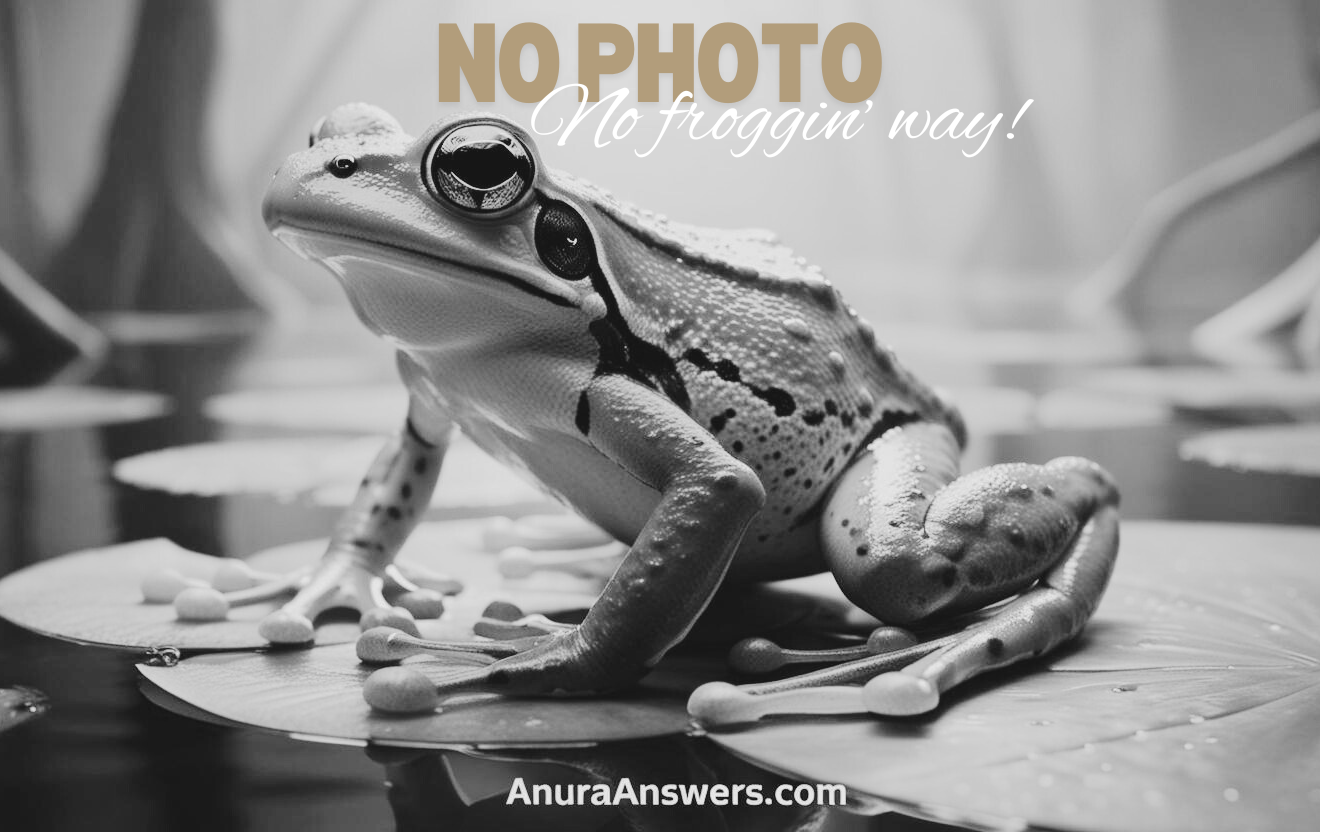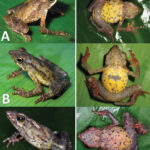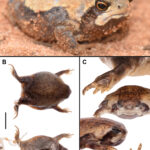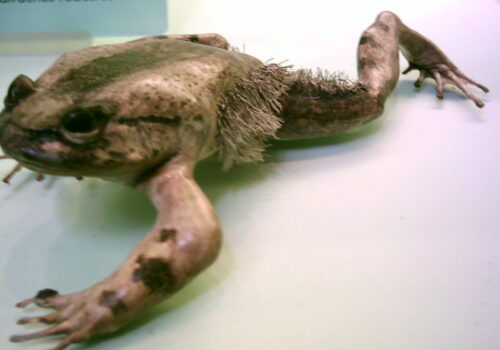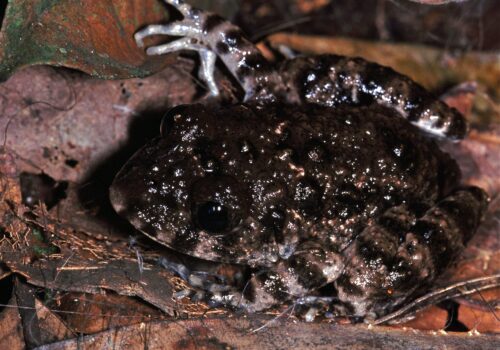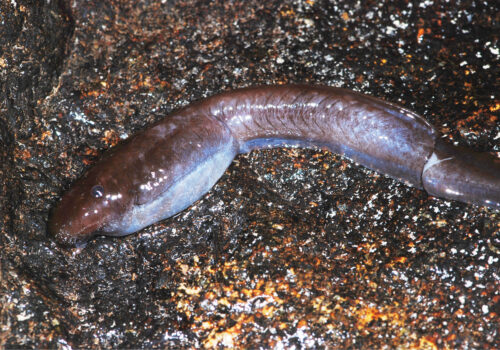- Unlocking the Secrets of Loveridge's Squeaker Frog (Arthroleptis loveridgei): An Enigmatic Jewel of East Africa's Forests
- Taxonomy and Classification: Where Does Arthroleptis loveridgei Fit in the Frog Family Tree?
- Natural Habitat: The Hidden Realm of Loveridge's Squeaker Frog
- Physical Characteristics: Discovering the Quiet Beauty of Arthroleptis loveridgei
- Behavior and Life Cycle: The Remarkable Adaptations of a Specialized Breeder
- Ecological Role: A Silent Guardian of Biodiversity
- Threats and Conservation Status: Navigating a Fragile Existence
- Cultural and Scientific Significance: Embracing the Value of a Tiny Forest Ambassador
- Conclusion: Honoring the Quiet Majesty of Arthroleptis loveridgei
Unlocking the Secrets of Loveridge’s Squeaker Frog (Arthroleptis loveridgei): An Enigmatic Jewel of East Africa’s Forests#
Underneath the quietly rustling leaves of East Africa’s verdant montane forests hides a small, secretive amphibian whose gentle squeaks blend harmoniously with the whispers of nature. Known scientifically as Arthroleptis loveridgei, Loveridge’s squeaker frog might easily escape notice entirely, if not for its intriguing vocalizations and elusive nature. Yet, in recent years, this seemingly modest frog has caught the attention of scientists and conservationists alike, emerging as a remarkable example of adaptation, vulnerability, and ecological importance.
What draws wildlife enthusiasts and amphibian specialists to this particular squeaker frog species? Could such a small, unobtrusive creature hold valuable insights for understanding complex ecosystems, climate impacts, and even conservation management? Journey with us deep into the hidden world of Arthroleptis loveridgei, exploring its biology, ecology, and the transformative role this intriguing amphibian plays in the tapestry of East African biodiversity.
Taxonomy and Classification: Where Does Arthroleptis loveridgei Fit in the Frog Family Tree?#
Belonging to the family Arthroleptidae, Loveridge’s squeaker frog is part of a diverse group of amphibians consisting of terrestrial-breeding frogs, famed for their unique reproductive strategies. Within this family, the genus Arthroleptis is recognized for species that forego an aquatic tadpole stage entirely, instead developing directly into miniature frogs within terrestrial egg clutches.
Specifically classified as Arthroleptis loveridgei, this species was first described by distinguished herpetologist Arthur Loveridge—after whom it was dedicated—in the early 20th century. Today, within scholarly herpetological circles, the frog symbolizes both Loveridge’s significant contribution and the enduring mysteries surrounding amphibian biodiversity in tropical forests.
Natural Habitat: The Hidden Realm of Loveridge’s Squeaker Frog#
A Region of Mist and Moss#
Restricted mainly to precise regions of East Africa’s Tanzanian highlands, particularly the richly forested Uluguru and Udzungwa mountain ranges, Arthroleptis loveridgei has evolved to perfectly blend into the pristine, moisture-laden landscapes of montane forests. These areas are characterized by cool temperature climates, persistent mists, dense patches of moss-covered ground, and fallen leaves that blanket the forest floor—an ideal hiding ground for a shy amphibian seeking seclusion and safety.
From Forest Floor to Hidden Niches#
The delicate microhabitats preferred by Loveridge’s squeaker frog are found chiefly deep within undisturbed primary montane forests. Here, beneath the canopy, the environment remains consistently humid, offering protection from desiccation. The frog habitually remains concealed under leaf litter or logs during daytime hours, venturing out at night to hunt insects and small invertebrates. Because of its reliance on these specific conditions, Loveridge’s squeaker frog has become a sensitive indicator species, responding acutely to environmental disturbances or habitat degradation.
Physical Characteristics: Discovering the Quiet Beauty of Arthroleptis loveridgei#
A Master of Camouflage#
At first glance, Loveridge’s squeaker frog may not stand out visually; rather, it is its subtle beauty that renders it fascinating to those who observe it closely. Adult frogs typically measure around 18 to 22 millimeters in length—a diminutive stature that contributes significantly to their elusive nature. Their coloration ranges from subdued shades of brown, olive, or rusty red, cleverly mottled with dark bands or spots that mimic the forest’s dappled sunlight and shadow play.
The frog’s skin texture is granular, rugged enough to convincingly match the earth’s varying surface textures. Such adept cryptic coloration and contour adaptation minimize predation, especially from forest-floor hunters such as birds, snakes, and small mammals.
Adapted for Terrestrial Life#
Adapted specifically for terrestrial existence, Loveridge’s squeaker frog does not possess webbed feet characteristic of aquatic frogs; instead, it exhibits slender toes perfectly suited for burrowing through debris and leaf litter in search of shelter and food. Large, resonant vocal sacs in males contribute to their distinctive nighttime squeaks—a melodic signature echoing through densely forested slopes.
Behavior and Life Cycle: The Remarkable Adaptations of a Specialized Breeder#
No Tadpoles Necessary: An Intriguing Reproductive Strategy#
Unlike most amphibians, who rely primarily on aquatic breeding sites to lay eggs and raise tadpoles, Loveridge’s squeaker frog employs a reproductive strategy called direct development. This means the clutch laid—relatively few eggs carefully safeguarded under damp leaves or moss—directly produces fully formed froglets, bypassing entirely the aquatic tadpole stage. Such adaptation not only mitigates vulnerabilities associated with standing water but also enables the species to survive in a terrestrial ecosystem far removed from streams or pools.
Squeaking in the Dark: The Frog’s Nightly Serenade#
On tranquil nights, as forests settle into darkness punctuated by moonlight filtering through dense branches, male Loveridge’s squeaker frogs awaken, filling the woods with their delicate calls. These sounds—gentle, intermittent squeaks and chirps—serve dual purposes: they help males establish territory and communicate readiness to females nearby, facilitating pairing during the rainy breeding season.
Expert Ambush Predators of Forest Litter#
As insectivorous opportunists, these frogs rely on their stealth and precision. Their hunting modus operandi involves patiently waiting, perfectly still beneath a fallen leaf, then abruptly lunging onto unsuspecting prey such as ants, termites, small beetles, and spiders. Through voracious insect consumption, Loveridge’s squeaker frog provides pivotal pest control services, indirectly supporting botanical richness in these fragile habitats.
Ecological Role: A Silent Guardian of Biodiversity#
Although tiny, Arthroleptis loveridgei plays a disproportionate role in maintaining ecological balance. By controlling insect populations, it lowers the chances of harmful outbreaks affecting plants or spreading diseases. Additionally, as prey for snakes, birds, and small mammals, Loveridge’s frog forms an essential middle link in the complex food webs of montane forests, reinforcing ecosystem stability and biodiversity.
Importantly, as highly sensitive environmental indicators, observing their populations and behavior allows conservationists to gauge ecosystem health swiftly, signaling early alerts concerning emerging threats like deforestation or climate stress.
Threats and Conservation Status: Navigating a Fragile Existence#
Sadly, the very habitats that uphold the existence of Arthroleptis loveridgei continue experiencing alarming pressure from increasing human influence. Deforestation for agriculture expansion, unplanned development, and logging significantly disrupts the pristine forests these frogs depend upon. Coupled with shifting weather patterns linked to climate change, this severe habitat fragmentation threatens the fragile survival of the species in the wild.
As a direct response to observed population declines, the International Union for Conservation of Nature (IUCN) currently categorizes Loveridge’s squeaker frog as Vulnerable. Conservation efforts now primarily center around protecting its limited, fragile habitat within protected landscapes such as Tanzania’s Udzungwa Mountains National Park and Uluguru Nature Reserve.
Cultural and Scientific Significance: Embracing the Value of a Tiny Forest Ambassador#
While its diminutive stature may not elicit significant attention culturally, within scientific fields, Arthroleptis loveridgei symbolizes critical understanding of amphibian biodiversity, evolutionary specialization, and ecological interdependencies. Scientists closely studying Loveridge’s squeaker frog often reveal insights into broader ecological health indicators, amphibian reproductive evolution, and adaptation strategies that may even inform broader conservation frameworks globally.
Conclusion: Honoring the Quiet Majesty of Arthroleptis loveridgei#
Loveridge’s squeaker frog, humble yet remarkable, offers an essential lesson in conservation and biodiversity protection. Though often overlooked amidst more charismatic wildlife, this elusive amphibian exists as testimony to nature’s incredible adaptability and intricate balance.
As stewards of the environment, each of us has a role in safeguarding its habitats and biodiversity. Today, we invite you to explore further, support awareness efforts, and amplify endeavors targeting the conservation of the beautiful, resilient, yet vulnerable Arthroleptis loveridgei. For, in protecting these small, quiet singers of Tanzania’s montane forests, we embrace more broadly the preservation of Earth’s planetary harmony.
